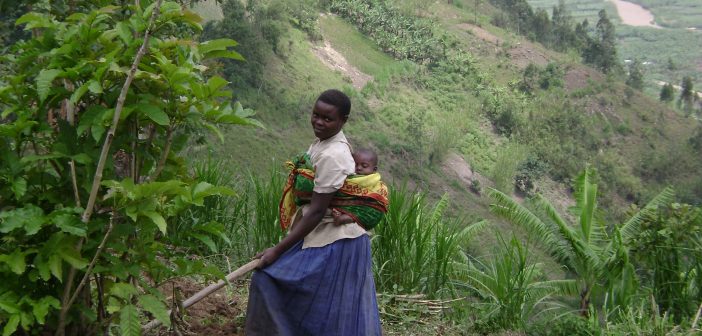KIGALI — A small, densely populated country, Rwanda has made great strides in reducing poverty and increasing food production, but there is still a long way to go. About 38 percent of the population lives below the poverty line and 35 percent of children under the age of five are chronically malnourished. Overall, approximately one-fifth of Rwandan households are food insecure.
To improve livelihoods and reduce food insecurity in Rwanda, several international humanitarian organizations have stepped in, including the World Food Programme, USAID and Food for the Hungry.
Current State of Food Insecurity
An analysis of food security in Rwanda by the World Food Programme found that 18.7 percent of households are food insecure, with 1.7 percent of these households suffering from severe food insecurity.
Notably, while 81.3 percent of households were found to be food secure, 38.6 of those households are only marginally food secure. These households are at a high risk of falling into food insecurity, largely because they are not able to save enough money to adequately prepare for unforeseen financial hardships. With 89 percent of rural households engaged in small-scale farming, many Rwandans are at risk of food insecurity if weather conditions hurt their production.
Several trends emerged when analyzing commonalities between food insecure households in Rwanda. Households experiencing food insecurity were consistently some of the poorest households in the nation. Additionally, a majority depended on unskilled daily labor, agricultural labor or their own agricultural production to maintain their livelihoods.
Household size also greatly influences food insecurity in Rwanda, as the more dependents a household has, the more likely they are to be food insecure. Households rely on having enough active members (those between the ages of 18 and 60 who can contribute financially) to provide enough for the very young and the elderly.
The characteristic of “head of the household” also impacted food security. Many food-insecure households were headed by someone with low educational attainment, some even being illiterate. Furthermore, female-headed households were found to be more likely to experience food insecurity, as well as households by head a single parent, as they generally have less active members.
Finally, disability status can also have an impact on household food security. Approximately 7 percent of household heads have a disability and these households are more likely to be food insecure.
Efforts to Address Food Insecurity
It is important to note that despite these findings, Rwanda has made significant improvements in reducing poverty and inequality and increasing the availability of food. Specifically, the country has achieved a 20 percent reduction in poverty in less than 20 years — the poverty rate stands at 38.2 percent currently compared with 58.9 percent in 2000.
In May 2019, Rwandan Prime Minister Édouard Ngirente noted that findings by the International Food Policy Research Institute’s Global Food Policy Report indicate that Rwanda has made significant progress in rural development. The government is working to improve the agricultural sector and agricultural markets in order to reduce food insecurity in Rwanda and improve livelihoods for farmers.
In addition to efforts by the Rwandan government, other international humanitarian organizations are working in Rwanda to increase food security and provide much-needed assistance to those who are food insecure.
- USAID – USAID is also focusing on supporting rural farmers and improving agriculture in Rwanda. They are working to increase agricultural productivity to ensure enough food is being produced to support the population and to help rural farmers make enough money to support themselves. Currently, USAID is funding programs to provide training and equipment to increase the quality and quantity of agricultural production, as well as working with the Ministry of Agriculture to increase investments in agriculture and support businesses.
- World Food Programme – The World Food Programme (WFP) works to provide aid and assistance to families experiencing food insecurity in Rwanda, in addition to supporting small-scale farmers. WFP provides daily school meals to 83,500 children, focusing their efforts on the districts with the most food insecurity. They also provide monthly food assistance to 150,000 refugees in Rwanda who are living in refugee camps. To help prevent the marginally food secure from falling into food insecurity due to unforeseen financial hardships, WFP is helping the government improve social protection programs across the nation and prepare for climate disasters.
- Food for the Hungry – Food for the Hungry (FH) is an organization that works in over 20 countries across the world. Their work involves providing food assistance and taking measures to significantly reduce food insecurity and poverty. FH has been active in Rwanda since 1994 and currently focuses on long-term development to improve food security and livelihoods. They are actively engaged in 34 communities in Rwanda and are providing aid to over 9,000 children.
Moving Forward
If food insecurity in Rwanda is to continue to decrease in the coming years, these efforts by the Rwandan government and international humanitarian organizations must continue and ideally need to also expand. As food security is connected to poverty, education, literacy and gender equality, addressing these areas as well will be essential to significantly reducing food insecurity in the nation.
– Sara Olk
